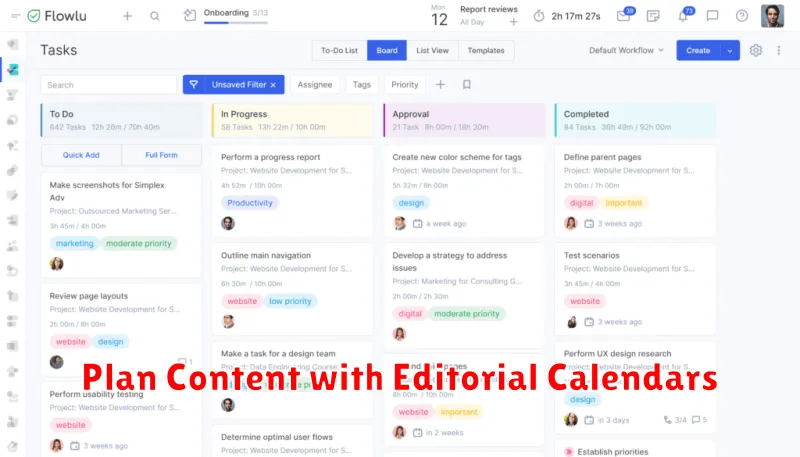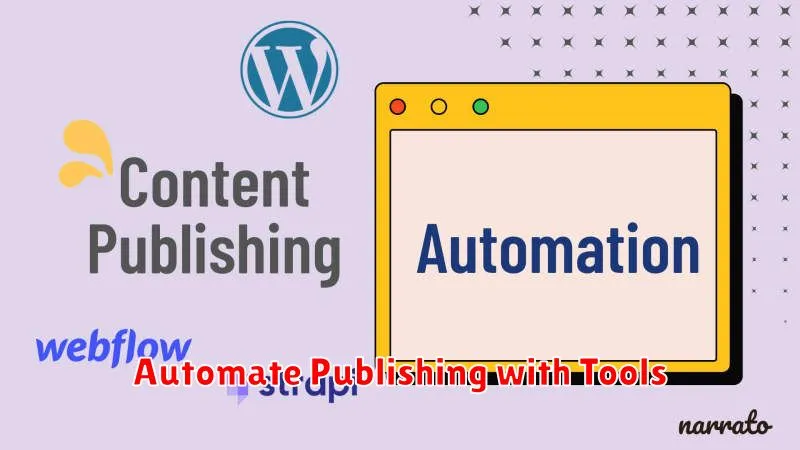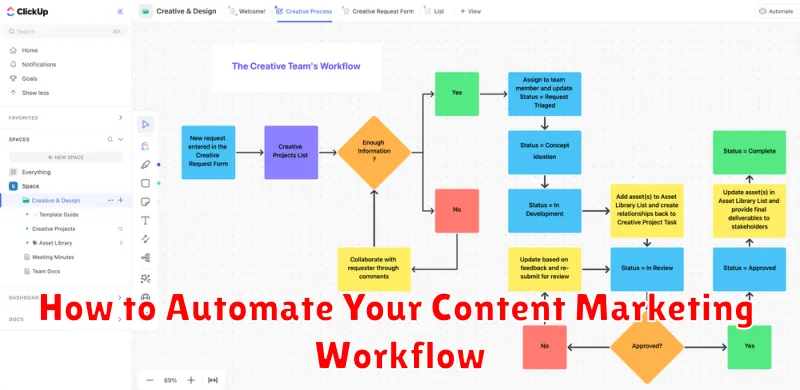Content marketing is crucial for business growth, but managing it can be time-consuming. Automating your content marketing workflow can significantly improve efficiency and productivity. This comprehensive guide will demonstrate how to automate various aspects of your content marketing, from content creation and scheduling to distribution and performance analysis. Learn how to leverage automation tools and strategies to streamline your workflow, freeing up valuable time and resources to focus on strategic initiatives. Discover how to optimize your content marketing strategy for maximum impact and achieve measurable results.
Are you struggling to keep up with the demands of content creation and distribution? Automating your content marketing workflow is the key to scaling your efforts and achieving greater success. This article will provide practical tips and actionable insights on how to automate key processes, such as social media posting, email marketing, and content repurposing. Explore the benefits of content marketing automation, including increased efficiency, improved consistency, and enhanced ROI. Transform your content marketing from a time-consuming chore into a well-oiled, automated machine.
Benefits of Content Automation
Content automation offers numerous advantages for businesses seeking to streamline their content marketing efforts. By automating repetitive tasks, you free up valuable time and resources.
Increased Efficiency: Automation tools can handle tasks like scheduling social media posts, email marketing campaigns, and even generating certain types of content, allowing your team to focus on more strategic initiatives.
Improved Consistency: Maintaining a consistent content calendar is crucial for audience engagement. Automation ensures your content is published regularly, reinforcing your brand presence and building a loyal following.
Enhanced Reach and Engagement: By automating distribution across multiple channels, you can expand your content’s reach and connect with a wider audience. Automated tools can also help personalize content delivery, leading to higher engagement rates.
Better Data Analysis and Optimization: Many automation platforms provide valuable data insights into content performance. By tracking metrics like click-through rates and engagement, you can refine your content strategy and optimize your campaigns for better results.
Plan Content with Editorial Calendars

Editorial calendars are essential for organized content marketing. They provide a centralized view of your planned content, allowing for better coordination and a consistent publishing schedule.
A well-structured calendar should include:
- Content topics
- Target keywords
- Content formats (blog post, video, infographic, etc.)
- Publishing dates
- Assigned authors or teams
- Content status (in progress, completed, published)
Using an editorial calendar facilitates content planning by providing a visual overview of your content strategy, ensuring consistent publishing frequency, and enabling strategic content distribution across various platforms. It also streamlines collaboration among team members.
Several tools can help create and manage editorial calendars, from simple spreadsheets to dedicated software. Choose a tool that aligns with your team’s needs and workflow.
Use AI for Ideation and Drafting
Artificial intelligence (AI) tools can significantly streamline the ideation and drafting phases of content creation. AI writing assistants can generate topic ideas based on keywords, competitor analysis, and current trends. This helps overcome writer’s block and ensures content relevance.
Beyond ideation, AI can assist with drafting. These tools can produce different content formats, such as blog posts, social media captions, and email newsletters. While AI-generated content often requires editing and refinement, it provides a strong starting point, saving valuable time and effort.
Key benefits of using AI for ideation and drafting include:
- Increased content output
- Faster content creation
- Improved content relevance
- Overcoming writer’s block
By leveraging AI’s capabilities, content marketers can focus their efforts on higher-level tasks, such as strategy, editing, and promotion.
Automate Publishing with Tools

Several tools can automate the publishing process, freeing up your time for other content marketing tasks. Choosing the right tools depends on your specific needs and platform. Social media management tools like Buffer, Hootsuite, and SproutSocial allow you to schedule posts across various platforms in advance.
For blog and website publishing, content management systems (CMS) such as WordPress offer scheduling features. You can draft your content, set a publishing date and time, and the CMS will automatically publish it. This allows for consistent content delivery even when you’re not actively working.
Email marketing automation platforms like Mailchimp and Constant Contact enable automated email campaigns triggered by specific events or schedules. This ensures your audience receives relevant content at the right time, nurturing leads and driving conversions.
By leveraging these tools, you can streamline your publishing workflow, maintain a consistent online presence, and maximize the impact of your content marketing efforts. Remember to choose tools that integrate seamlessly with your existing systems and processes for optimal efficiency.
Integrate Content with Email Campaigns
A key aspect of automating your content marketing workflow is integrating your valuable content directly into your email campaigns. This allows you to deliver targeted messages to your audience, nurturing leads and driving conversions.
Automated email sequences can be triggered by specific user actions or timed to coincide with content releases. For instance, a new subscriber might receive a welcome series featuring your most popular blog posts. Similarly, when you publish a new ebook, an automated email can alert your subscribers and provide a download link.
Consider segmenting your email list based on user interests or demographics to deliver even more relevant content. This personalized approach strengthens engagement and fosters stronger relationships with your audience. By automating this process, you can efficiently distribute content and maximize its impact.
Monitor Performance Automatically
Automated performance monitoring is crucial for understanding the effectiveness of your content marketing efforts. By setting up automated reports and dashboards, you can track key metrics without manual intervention.
Select the key performance indicators (KPIs) relevant to your content goals. These may include website traffic, social media engagement, lead generation, or sales conversions. Choose a suitable analytics platform that allows for automated reporting and data visualization.
Configure the platform to track your chosen KPIs and generate reports at desired intervals (daily, weekly, or monthly). Set up automated alerts to notify you of significant changes or anomalies in performance. This allows for timely intervention and optimization of your content strategy.
Maintain Human Oversight
While automation streamlines content marketing, human oversight remains crucial. Automation tools are powerful, but they lack the nuanced understanding of brand voice, audience sentiment, and creative judgment that a human provides.
Regularly review automated processes and content outputs. This ensures the quality and relevance of your content, catches potential errors, and allows for adjustments based on performance and audience feedback.
Focus human intervention on tasks requiring strategic thinking and creativity, such as content strategy development, campaign ideation, and high-level content creation. This allows you to leverage automation’s efficiency while maintaining the human element essential for impactful content marketing.

